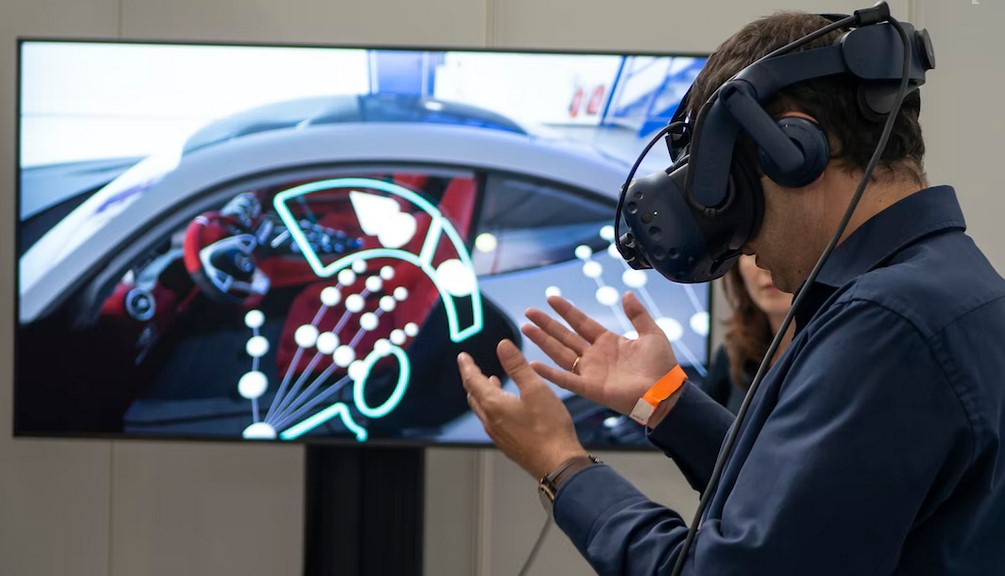PHILADELPHIA – Immersive learning, virtual reality, augmented reality, immersive campus life, and more are all emerging technologies that higher education institutions are exploring. This article discusses some of these new technologies and what they can mean for higher education. But first, what is the metaverse, and how can it be used in higher education?
Immersive Learning
Immersive learning combines simulation and education in the same environment. Virtual objects and scenarios allow students to interact with the content, making learning more realistic and effective. It also allows students to make mistakes safely and to experience key concepts. It can be used as a supplement to traditional learning methods to reinforce key concepts.
The primary benefit of immersive learning is that it helps students focus on the learning experience. In a traditional classroom environment, students are distracted by many different factors. The learner can concentrate on the content at hand by removing these distractions. A study by PwC showed that people engaged four times more when using virtual reality to learn.
Immersive learning is particularly useful for STEM classes, as it allows students to explore a virtual model of a real-life environment. For instance, a virtual cadaver lab created by Fisk University allows pre-med students to examine and operate on a human body more precisely than traditional lab methods. Fisk University previously could not afford real cadavers, but the immersive cadavers allow for the same level of detail.
Virtual Reality
Virtual reality is a technology that can enhance the learning experience in courses and classrooms. As technology advances, more researchers are reporting the use of virtual reality in education. This research creates a rich knowledge base for educators who want to implement this technology in their classrooms. However, before implementing this technology in higher education, it is important to understand what it can do before adopting it.
While technology may have numerous educational benefits, it is not without its drawbacks. First of all, it can be costly. Many higher education institutions are still hesitant to use this technology, especially minority-serving institutions. This can lead to an unequal outcome for students. Furthermore, VR programs can be prohibitively expensive.
Using VR in higher education requires some preparation from teachers and lecturers. A small group of students is ideal to avoid disruptions and technical problems. However, scaling up the technology beyond a handful of students may be unrealistic due to cost and time considerations. To make VR useful, lecturers should set aside time for preparation and ask for student support. The extra time is worth the extra value students can derive from the experience.
Augmented Reality
Augmented reality can be an effective learning tool for online or distance learning students. Teachers can create virtual explorations and set up gamified tasks for students to perform at home. The best part is that the students do not need special equipment to engage in such activities. While VR headsets are out of the budget of most college students, augmented reality apps for mobile devices can be easily downloaded to help students study from anywhere.
Augmented reality can help learners learn about complex subject matter. For example, an AR app designed to help medical and biology students study human anatomy can help students better understand how the human body works. Students can use augmented reality to view detailed images of body parts and interact with 3D models. They can also use AR to visualize engineering designs. With AR apps, students can examine the mechanical designs of the human body in a more meaningful way.
Augmented reality in higher education has a variety of applications, ranging from creating a game environment to developing lesson plans. With more than 2 billion users of AR smartphones, this technology could be a game-changer for the higher education sector. It can also make classroom and distance learning more effective.
Immersive Campus Life
In the future, college students will experience real-world experiences through virtual reality. They’ll experience foreign streetscapes and interact with avatars who will act as conversation partners. And educators will have the chance to learn from the experiences of community members who face systemic challenges. Some believe that immersive campus life is the future of higher education.
While the future of higher education is still in its early days, some researchers are seeing the potential for virtual reality and immersive campus life shortly. Immersive learning environments encourage students to apply knowledge in real-world situations. Immersive environments also help students demonstrate mastery of learning objectives.
Students who engage in immersive learning are rewarded with practical knowledge they won’t gain from traditional learning methods. The experience also allows students to work more closely with faculty and students from different cultures and countries. In this way, students will better understand course material and develop career goals.
Read More: www.phillycaller.com









 Fact0rn
Fact0rn  Brett (ETH)
Brett (ETH)  ZBIT•BLUE•BITCOIN
ZBIT•BLUE•BITCOIN  U Coin
U Coin  tomiNet
tomiNet  00 Token
00 Token  Silly Dragon
Silly Dragon  BEAM
BEAM  Dogechain
Dogechain  Forward
Forward  Catana
Catana  Interest Compounding ETH Index
Interest Compounding ETH Index  Trust The Process
Trust The Process  Robonomics Network
Robonomics Network  AgriDex
AgriDex  Radiant
Radiant  Dyad
Dyad  Holdcoin
Holdcoin  Stride Staked Osmo
Stride Staked Osmo  X Community
X Community  Neroboss
Neroboss  Solanium
Solanium  Sharpe AI
Sharpe AI  Elonia Trump
Elonia Trump  Fuse
Fuse  Push Protocol
Push Protocol  PIP
PIP  Luminous
Luminous  Chain Games
Chain Games  Epik Prime
Epik Prime  Bitcoin on Base
Bitcoin on Base  MEMENTO•MORI (Runes)
MEMENTO•MORI (Runes)  Ben the Dog
Ben the Dog  ROACORE
ROACORE  FDREAM
FDREAM  Galaxia
Galaxia  Cult DAO
Cult DAO  KCC Bridged USDT (Kucoin Community Chain)
KCC Bridged USDT (Kucoin Community Chain)  TEH EPIK DUCK
TEH EPIK DUCK  BIDZ Coin
BIDZ Coin  Avarik Saga
Avarik Saga  GPU ai Rich
GPU ai Rich  LightLink
LightLink  Koi
Koi  Seal
Seal  Ispolink
Ispolink  EverValue Coin
EverValue Coin  Shark Cat
Shark Cat  Catcoin
Catcoin